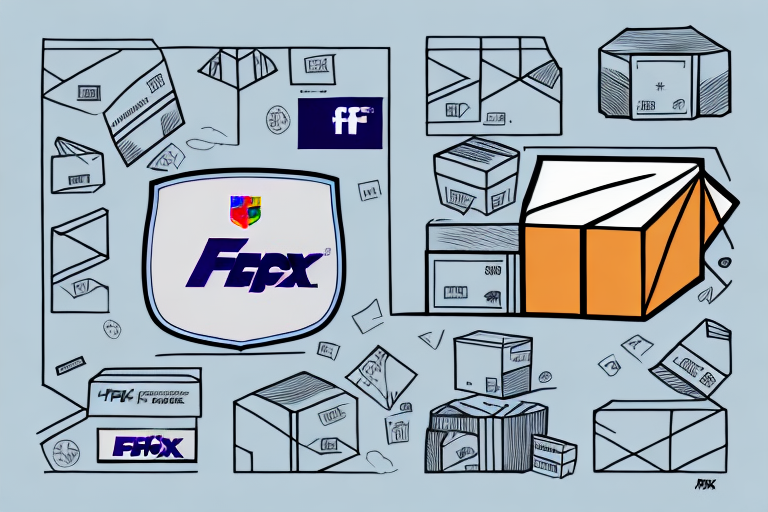Are FedEx and UPS Shipping Rates the Same?
When it comes to shipping parcels and packages, two of the most popular options are FedEx and UPS. However, many people may wonder if their shipping rates are the same. The short answer to this question is no; FedEx and UPS do not have identical shipping rates. In fact, there are numerous key differences between the two companies that make comparing their shipping rates and services essential for both individuals and businesses.
Key Differences Between FedEx and UPS Shipping Rates
While both FedEx and UPS offer a wide range of shipping services, their rate structures and service offerings differ in several important ways:
- Rate Calculation: UPS typically charges a lower base rate for shipping packages but may impose additional fees for services like fuel surcharges and residential delivery. In contrast, FedEx may have slightly higher base rates but often includes these extra services in the base price of the shipment.
- Package Size and Weight: UPS may charge extra for packages that weigh over 150 pounds, whereas FedEx may impose additional fees for packages exceeding 70 pounds. Both companies have specific size and weight restrictions that can affect shipping costs.
- Service Types: Both companies offer various shipping options, including ground, express, and international shipping. Depending on your specific needs, one company may be more cost-effective or faster than the other.
According to a recent industry report, businesses can save up to 15% by optimizing their shipping strategies with the right provider.
How to Choose Between FedEx and UPS for Your Shipping Needs
Choosing between FedEx and UPS for your shipping needs can be challenging. Here are some factors to consider:
- Package Size and Weight: Assess the dimensions and weight of your packages to determine which carrier offers better rates for your specific needs.
- Service Requirements: Consider whether you need expedited delivery, real-time tracking, or additional services like insurance.
- Budget: Compare the overall costs, including base rates and any additional fees, to find the most cost-effective option.
- Delivery Timeline: If speed is a priority, FedEx's express services might be more suitable. For cost-effective long-distance shipping, UPS's ground services could be preferable.
- Global Reach: For international shipping, FedEx has a larger global network, which might offer more reliable service in certain regions.
- Customer Service: Evaluate the quality of customer support by reading reviews and seeking recommendations from other businesses or individuals.
For a comprehensive guide on selecting the right shipping strategy, refer to our article on shipping software.
The Impact of Package Size and Weight on FedEx and UPS Shipping Rates
The size and weight of your package significantly impact the final shipping cost. Both FedEx and UPS have specific size and weight restrictions, and exceeding these can lead to higher costs. For example, shipping a large item like furniture may incur additional fees:
- FedEx: Charges extra for packages over 70 pounds.
- UPS: Imposes additional fees for packages exceeding 150 pounds.
Additionally, the distance your package travels affects the rate. International shipments may include extra fees and taxes, further influencing the overall cost. Both carriers offer various shipping options, such as expedited or ground shipping, which can also affect pricing. Careful consideration of these factors ensures you get the best deal for your specific package and destination.
How to Calculate Shipping Costs with FedEx and UPS
Calculating shipping costs with FedEx or UPS involves several factors:
- Package Size and Weight: Larger and heavier packages cost more to ship.
- Distance: Longer distances result in higher shipping costs.
- Service Level: Expedited services are more expensive than standard options.
- Additional Fees: Fees for insurance, signature confirmation, and special handling can increase costs.
Both FedEx and UPS provide online calculators to help estimate shipping costs based on these factors. It's important to choose the appropriate service level to balance speed and cost effectively. For detailed guidance, visit our article on UPS shipping rates.
Understanding the Factors That Affect FedEx and UPS Shipping Rates
Several factors influence shipping rates for both FedEx and UPS:
- Package Dimensions and Weight: Larger and heavier packages incur higher costs.
- Delivery Speed: Faster delivery options come at a premium.
- Distance: Greater distances lead to increased shipping rates.
- Additional Services: Services like insurance, signature confirmation, and customs clearance add to the cost.
Both companies also offer discounts and promotions, such as volume shipping discounts or special rates for specific industries. Checking their official websites or contacting customer service can help you identify available discounts to reduce your shipping expenses.
The Pros and Cons of Using FedEx vs. UPS for Your Business
When selecting a shipping partner for your business, both FedEx and UPS offer distinct advantages and potential drawbacks:
FedEx
- Pros: Faster delivery speeds, real-time tracking, comprehensive insurance coverage, and a strong international presence.
- Cons: Generally higher base rates and potential additional fees for certain services.
UPS
- Pros: Lower base rates, extensive pickup options, and strong domestic network.
- Cons: Additional fees for services like fuel surcharges and residential deliveries.
Additionally, UPS may offer more competitive rates for larger packages, while FedEx excels in international shipping to remote locations. Evaluating these factors in relation to your business needs will help determine the best shipping partner for you.
Tips for Saving Money on FedEx and UPS Shipping Rates
Here are several strategies to reduce your shipping costs with FedEx and UPS:
- Consolidate Shipments: Combine multiple packages into a single shipment to reduce the number of packages and associated fees.
- Negotiate Rates: Contact your shipping provider to negotiate better rates, especially if you have high shipping volumes.
- Use Shipping Software: Utilize online shipping software to streamline your shipping process and avoid unnecessary fees.
- Take Advantage of Discounts: Both FedEx and UPS offer various discounts and promotions for volume shipping, specific industries, and during certain times of the year.
Implementing these strategies can lead to significant savings on your shipping costs.
Comparing International Shipping Rates with FedEx and UPS
For businesses that need to ship products internationally, it's crucial to compare the shipping rates and services of FedEx and UPS:
- Service Options: Both companies offer air and sea freight, express delivery, and customs clearance services.
- Rates: Rates vary based on destination country, package size, weight, and service type.
- Global Reach: FedEx has a larger global network, which may offer more reliable service in certain regions, while UPS has a strong presence in others.
Businesses should research and compare the rates and services of both companies to determine which provider best meets their international shipping needs. Consider factors like delivery speed, reliability, and the specific requirements of your shipments.
What Customers Should Know About FedEx and UPS Delivery Services
Both FedEx and UPS offer a variety of delivery services tailored to different needs:
- Customized Delivery Schedules: Arrange specific delivery times and dates to meet your requirements.
- Real-Time Tracking: Monitor your shipments in real-time for better visibility and management.
- Secure Delivery Options: Options like signature confirmation and package rerouting enhance the security of your deliveries.
- Established Networks: Both companies have robust delivery networks ensuring timely and reliable deliveries.
Understanding these services allows you to choose the most appropriate delivery options for your packages, ensuring efficiency and customer satisfaction.
In conclusion, while FedEx and UPS offer similar shipping services, they differ in their rate structures, service offerings, and strengths. By understanding these differences and evaluating your specific shipping needs, you can make an informed decision on which shipping provider is best suited for you.
One key difference between FedEx and UPS is their approach to international shipping. FedEx has a larger global presence and offers more international shipping options, including express and economy services. UPS, on the other hand, has a strong focus on customs brokerage and can help navigate the complex regulations and paperwork involved in international shipping.
Another factor to consider when choosing between FedEx and UPS is their pricing structure. While both companies offer competitive rates, their pricing models can differ. FedEx typically charges based on package weight and distance, while UPS also takes into account package dimensions and additional services requested, such as signature confirmation or Saturday delivery.




















